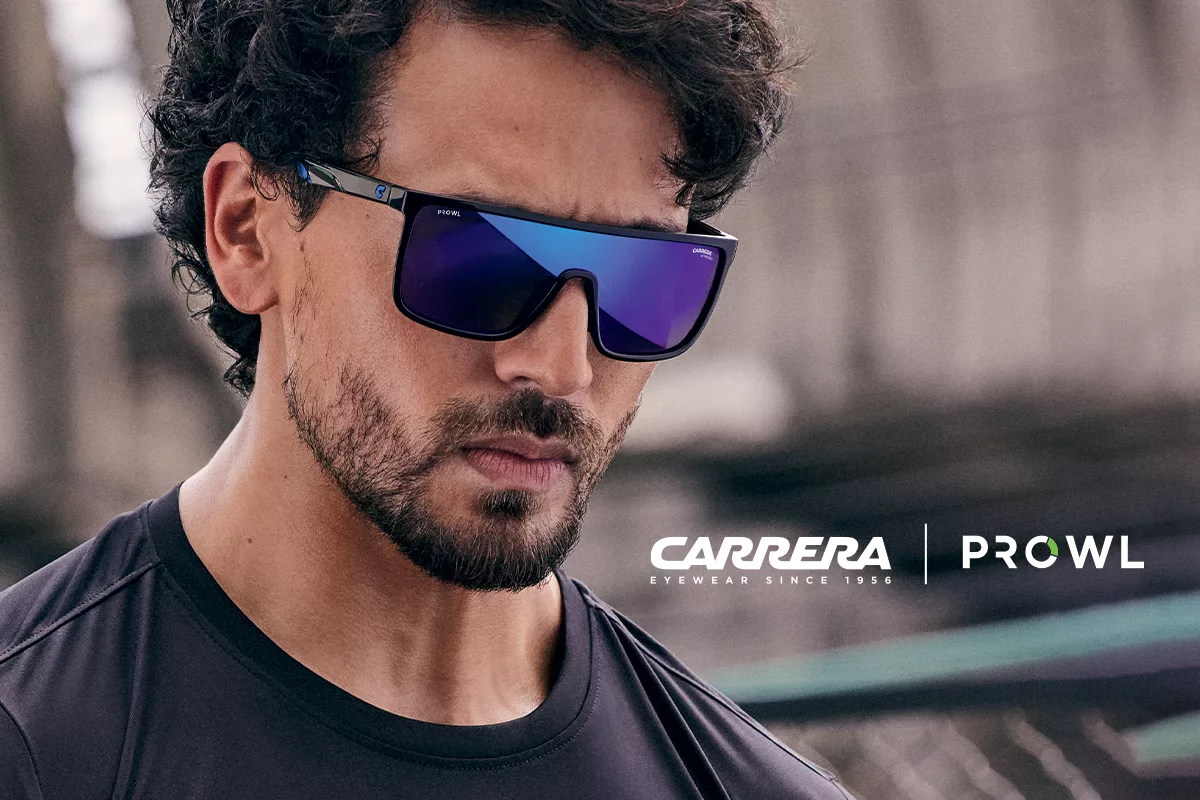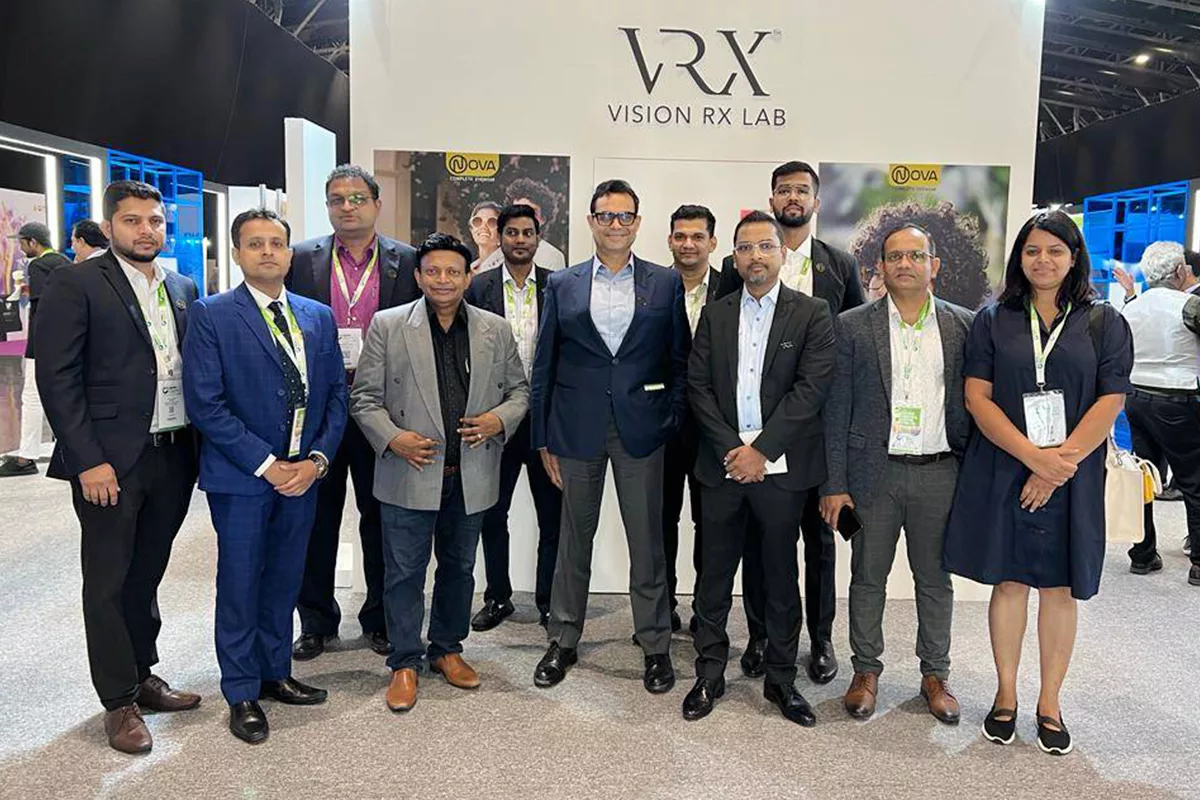Though 3D printed eyewear has already entered the optical market, its real place is in a future that is waiting in the wings. What is this new technology all about? We find out in Vision And Beyond

Even as the optical industry witnesses tremendous growth in style, range and innovativeness in domestic and international brands, a very fundamental change is taking place backstage. A revolutionary game-changing process that could be rewriting the script of the optical industry – 3D printing of eyewear. Where customised eyewear is created through programming, saved in a file and transferred to any computer in the world where, provided you have the software and the requisite 3D printing machine and materials, you can print your eyewear. Sounds like sci-fi? Probably. But the amazing truth is that several companies worldwide are already into 3D printing of eyewear and the customer response is naturally hugely positive.
So what is 3D printing? 3D printing is when instead of paper and ink, you use material. Two kinds of material. One that acts as the base material – the paper, so to say. And the other – the ‘ink’ – that converts the ‘paper’ into something meaningful and effective. 3D printing may have come into existence several years back, but its widespread and intensified usage has started only now. From creating fun products to eyewear to working on the possibility of creating body organs in the future, 3D printing is a bit scary in its enormity.
For the eyewear industry, 3D printing is still an apple waiting to be devoured, but yes, the first bite has been made and the results are heady. A couple of large companies have already forayed into this arena, such as ic! berlin. In the United States, Protos Eyewear launched a crowdfunding project that became the core investment source for this venture. This hugely successful campaign raised $25,000, enough for the company to take flight. Currently, the company is manufacturing 3D printed eyewear for its investors. But if this business logistics involve huge money, there are smaller players who are making thinner but indelible inroads into the market as well. Like an optometrist in Netherlands who is using a small home purpose printer to print frames that carry the customer’s name on them.
Far away, in Sydney, Australia, the successful online eyewear retailer, Sneaking Duck launched its first collection in 2013 and was instantly earmarked as a finalist in the innovation category for the 2014 Online Retail Industry Awards. So what makes this 3D printing technology so awe-inspiring?
Magic Of 3D Technology
John Mauriello, founder and principal designer at Protos Eyewear, explains that people’s faces are incredibly diverse and with 3D printing it is possible to make minute changes in the frames to facilitate a drastically better fit. The company has developed an algorithm that tailors frames to the customer’s unique features and style with just two pictures and sends this data to the 3D printer. According to the company, the algorithm can rapidly make changes to the 3D models, allowing for more flexibility and less production time.
Sneaking Duck uses selective laser sintering (SLS) technology to create the nylon frames of their line of customised 3D printed prescription glasses and sunglasses. The glasses are available in 8 different styles and the frames can be fitted with optical, sunglass or photochromic lenses.
At Tom Stevens Eyewear, the process always starts with a pen and paper sketch of the designs Tom Stevens would like to see included in the collection. The drawings then are given 3D detailing and processed in the computer. Says Bas van Hensbergen of Tom Stevens Eyewear, “Once the designs are in place, the real magic of the CO2 laser printers starts. It takes about 24 hours for the process to be completed and the frame to be built, 1/10 mm layer at a time. Once completed, it takes another 2 days for the parts to be cooled. Once cooled, the parts are hand-cleaned and then are sent to the trembling machine where they are smoothened to perfection. The frame is now ready for colour. Once that is complete, the frame is cooled again. Only then does the final polishing start which gets completed in a couple of hours.”
A great advantage of the Tom Stevens 3D eyewear is its ability to adjust just like a normal acetate frame. This makes it really easy for the opticians. The added advantage for the customer is that it is really lightweight, only 8 grams. Unlike skeptics, Tom Stevens Eyewear believes that 3D eyewear is here to stay and that processes will only get better. Currently, they are also working on using different kinds of materials mixed into the polyamide, which creates a different look altogether.
![Mykita Mylon (Image credit: MYKITA [in-house photography])](http://visionplusmag.fourplus.media/wp-content/uploads/sites/2/2015/02/Mykita-Mylon-237x300.jpg)
![Mykita Mylon (Image credit: MYKITA [in-house photography])](http://visionplusmag.fourplus.media/wp-content/uploads/sites/2/2015/02/Mykita-Mylon-237x300.jpg)
Mykita, one of the pioneers in this field, has already won recognition for its manufacturing process of Mylon. In 2007 they started to experiment with SLS, an additive manufacturing process that combines the magic of 3D printing and lasers. Launched in 2011, Mykita Mylon is today a collection of sun and medical glasses, produced via SLS, with a patent on the surface treatment of the frames. Several years of research resulted in a complex process in which the raw surface of the material is finished and rendered wearable in a series of stages. This gives all Mylon frames a unique visual and tactile appeal.
The speciality of Mykita Mylon glasses are that they are extremely light, they can be heated up for individual adjustments and are very durable. The collection was initially launched as a range of sports glasses with a functional, yet aesthetic design. Since 2012 the company also offers an impressive range for individual wearers of prescription glasses. Mykita Mylon also offers special polarizing lens sunglasses that absorb reflection and are perfect for activities like water sports or even driving. The patented manufacturing process has already won Mykita the iF material award, and the Red Dot design award in the field of product design.
Will 3D Printing Replace Regular Manufacturing?
While the immense possibilities of the 3D printing process are taking the eyewear industry by storm, there is one fear that is lurking in the minds of the traditionalists, especially the retailers. If there comes a day when all eyewear can be customised to the finest detail and ordered online and manufactured at home, then would one need retail shops at all? And would this mean the beginning of the end for retailers?


Not everybody is so gung-ho about 3D eyewear. Australian eyewear designer Paul Taylor, for instance, believes that 3D printing will never replace the good old regular manufacturing process. His vote also went for the traditional material, acetate that is much superior qualitatively than the nylon material used for 3D printing.
Murray O’Brien, the CEO of Australian Dispensing Opticians Association, also agrees that traditional manufacturing can never be replaced by 3D printing. He had remarked once, “Over the years, I have seen some weird and wonderful innovations come and go, but the standard frame materials remain on top.”
Yet there are countries and manufacturers that are going full throttle on this. Like China. Reportedly there is one particular eyewear factory in China that is doing a production run with 500 3D printers. Eyewear pundits claim that it won’t be too long before consumers will be able to have their heads scanned online and order a frame with a specific shape and colour. A 3D printer would thereafter produce the individual frame which would fit perfectly. Meanwhile, Professor Gordon Wallace, Director of the Australian Intelligent Polymer Research Institute at University of Wollongong, has said that 3D printed frames can be produced from robust materials including metal, instead of the more fragile nylon that is being currently used. Of course, it would have to be as cost-effective as nylon for it to be successful.
So How Does The Product Look Now?
Apparently, pretty awful. At least those made with nylon. The glasses that are made from nylon can’t be heated and therefore there are times that they don’t adjust comfortably on a person’s face. This is especially true of the ridge. Despite the lightness of the frame, the ridge of the nose is hard and can hurt. The search is on now to find a suitable replacement that would be easy to use in the manufacturing or printing process, that would also be extremely cost-efficient, and finally should be truly comfortable.


Expensive But Getting Cheaper
Currently, Sneaking Duck has its 3D eyewear printed on a SLS printer in the United States. It’s not very cost-effective. Each frame costs about $360 and also takes about six months to be executed from the time of ordering. The essential difference between nylon and SLS is that while the cheaper 3D printers ($700) creating nylon frames extrude plastic like a hot glue gun, the SLS printer ($25,000) lays down a bed of powder, which is then melted by laser technology.
But whatever the medium used, it is a given fact that 3D printers are here for good. And the faster eyewear companies wake up and smell the coffee, the better it is for the industry. People will eventually download patterns for the frame they want, experiment with colour, shape and size using their own 3D printer, then send them off or drop into a dedicated 3D printing bureau to have the final product made to order. This is definitely a space which traditional manufacturers and retailers should watch closely and develop their own plan of action to either combat this or join forces effectively.










